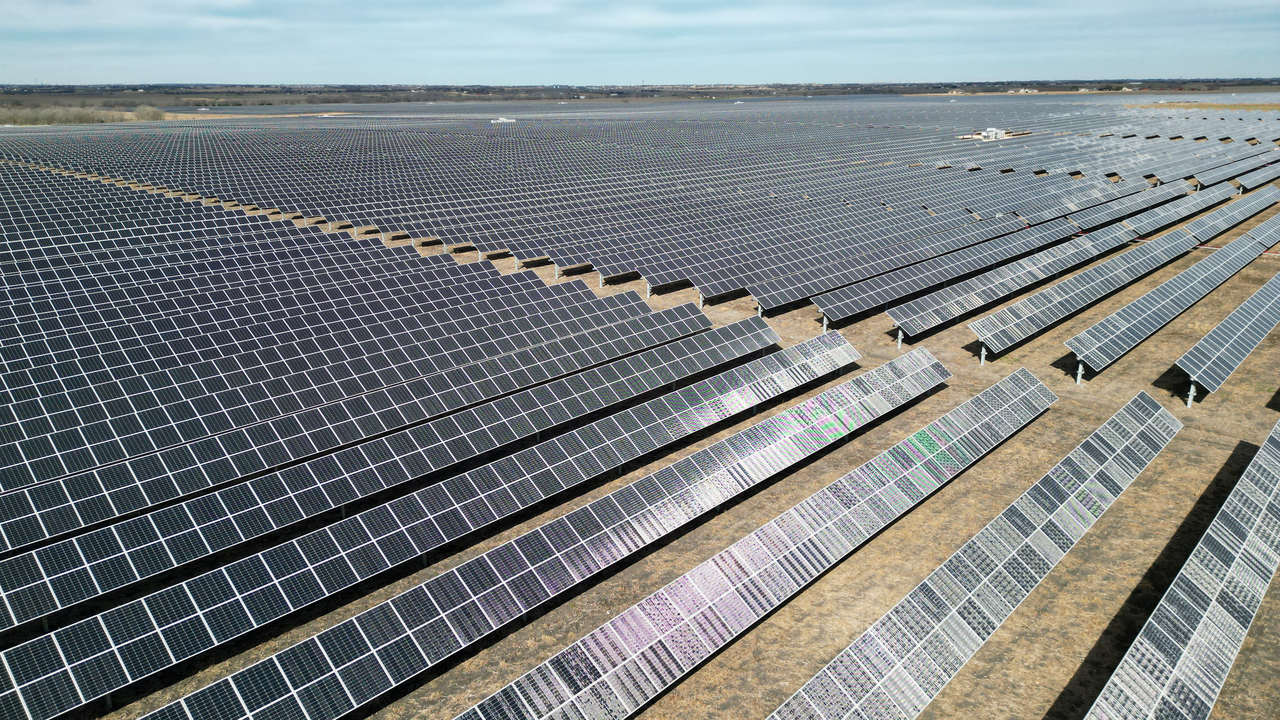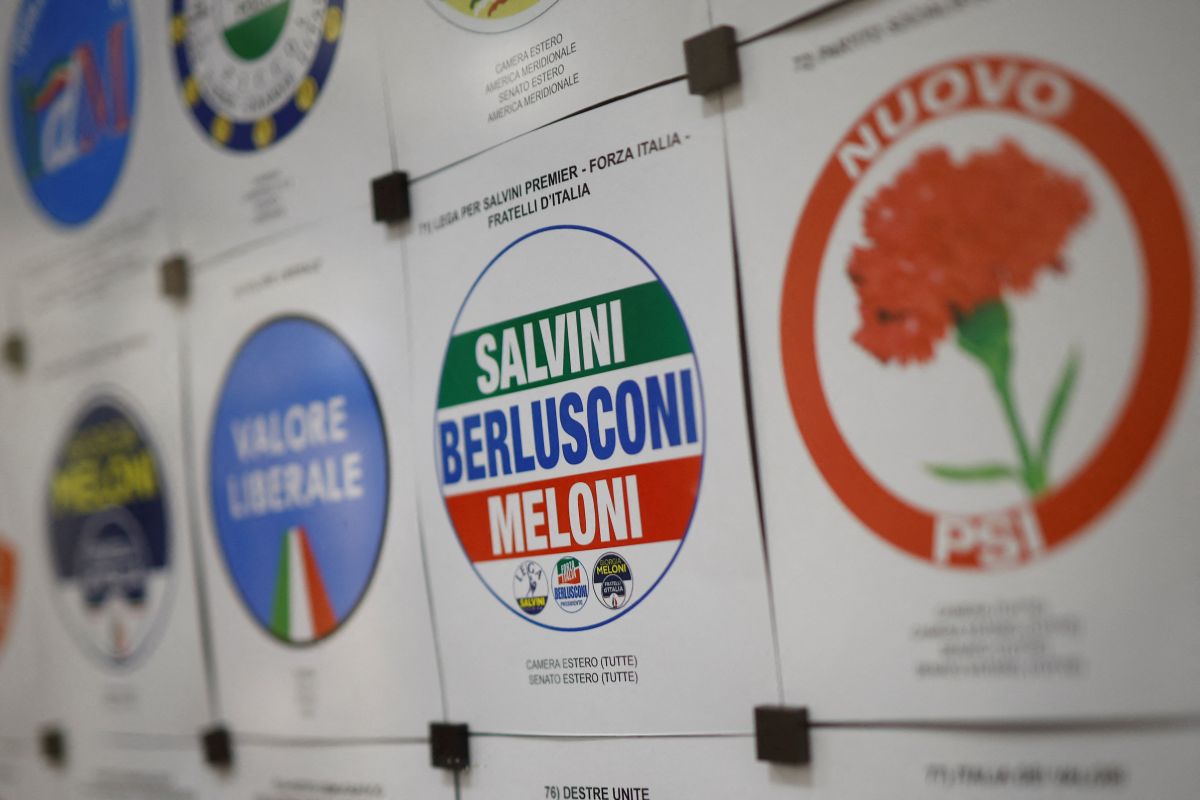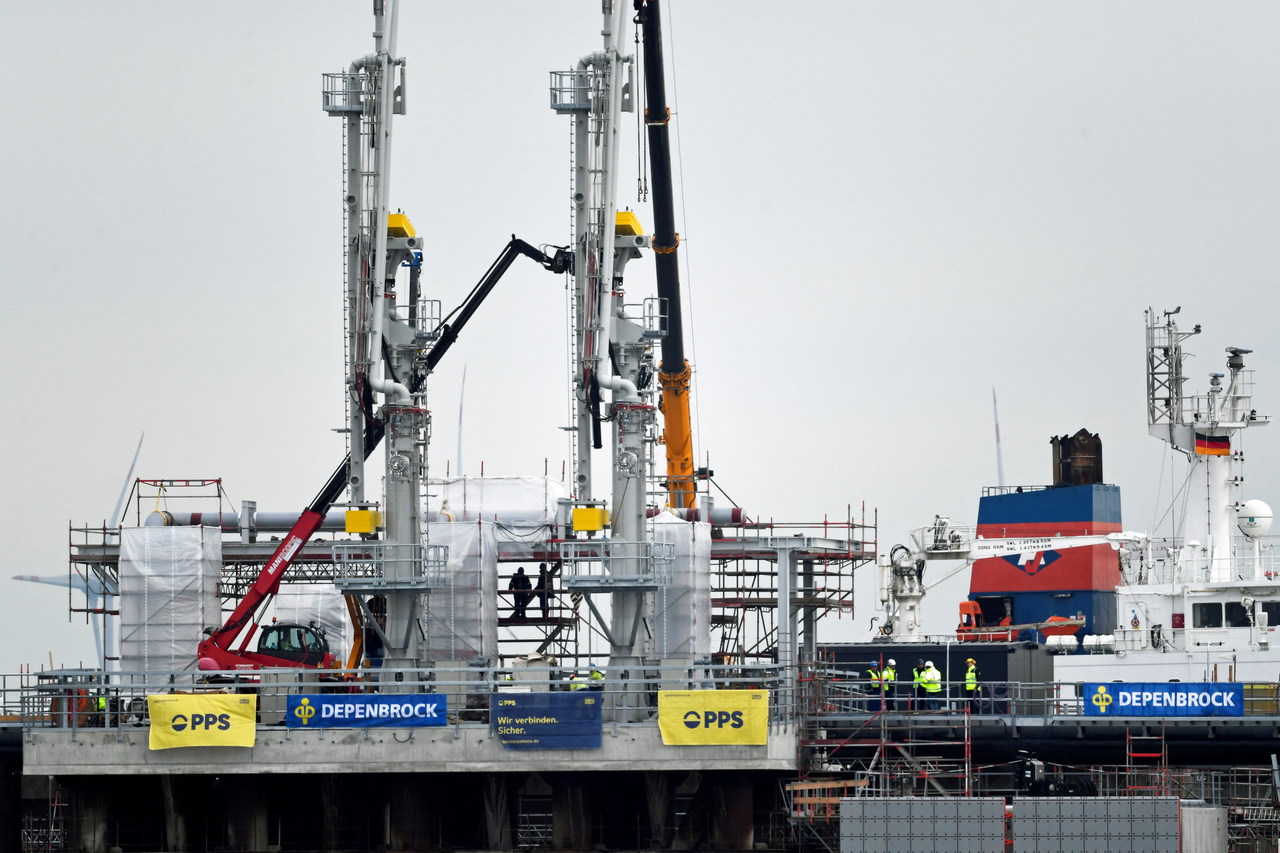Italy Reworks Energy Policy after the Russian Invasion of Ukraine
Russia’s aggression against Ukraine forced the Italian authorities to quickly seek alternative gas supplies and sparked a debate about the risks of dependence on foreign commodities. Despite favourable natural conditions, both the development of renewable energy sources (RES) and domestic gas production are hampered by bureaucratic obstacles and opposition in local communities. Continued dependence on energy imports will eventually push Italy to normalise relations with Russia.
 Scott Coleman / Zuma Press / Forum
Scott Coleman / Zuma Press / Forum
The competitiveness of the Italian economy, in which exports of goods account for around 30% of GDP, is dependent on the prices of commodities. These translate into the cost of electricity, about 40% of which is obtained from gas, including Russian fuel. Russia’s full-scale invasion of Ukraine in February 2022 put Italy in a situation comparable to that of Germany. Mario Draghi’s government since then has taken steps to find alternative suppliers of gas. Giorgia Meloni’s cabinet, which was sworn-in in the autumn, also wants to increase domestic gas production and start building new LNG terminals. Both decisions are raising tensions within the electorate of the ruling party and the coalition.
The Causes of Italy’s Energy Problems
Italy is one of the most energy-dependent countries in the EU (78.5% against an average of 60.5%), which is the result of political choices made since the mid-1980s. The Chernobyl disaster led to a referendum in 1987 that led to the closure of three nuclear power plants and halted construction of a fourth. The public’s aversion to nuclear energy was confirmed by another popular referendum in 2011. Environmental considerations have led to coal- and oil-fired power plants being gradually replaced by gas-fired installations (the complete phase-out of coal is planned for 2025). As a result, as much as 48% of Italy’s electricity in 2021 was produced using gas, while around 13% was imported. However, electricity production only accounted for about 35% of gas consumption, as the rest was consumed by industry (about 20%) and households (about 45%). In total, demand for this commodity amounted to 76 bcm in 2021. Russia (around 41% of imports) and Algeria (28%) remained the main suppliers until 24 February 2022. Gas from Russia arrives via the TAG (Trans Austria Gas) pipeline running through Ukraine, Slovakia, and Austria. Russia’s role as a gas exporter had been growing in previous years, linked to the loss of access to Italian ENI’s fields in Libya because of civil war.
Despite its close ties with NATO and the U.S., Italy, which is focused primarily on the security of the Mediterranean, consistently advocated a policy of dialogue with the USSR and, following its collapse, the development of relations with Russia. While receiving energy resources (in addition to gas, Russia also supplied about 20% of Italy’s oil needs and 40% of its coal needs), Italy exported industrial products, luxury goods, and food to Russia. Exports to Russia accounted for around 1.5% of total Italian exports in 2021, while Italian investments in Russia were estimated to be worth around $5 billion. Russia has also invested in Italy, including in the strategic energy sector. An example is the country’s largest refinery in Priolo (around 20% of Italian fuel production and 20% of Sicily’s electricity needs), which was owned by the Swiss subsidiary of Lukoil until December 2022.
The delayed development of RES in Italy remains a problem. The installation of photovoltaic panels and wind turbines sparks opposition in local communities, with some fearing a drop in land prices. The situation is improved by well-developed hydropower in the north of the country, so that 35% of the country’s electricity needs were covered by RES in 2021. The poor state of the French nuclear energy sector, a traditional exporter of energy to Italy, has put the supply from this direction in doubt and created the risk of a power deficit.
The outbreak of war also came as a shock to the Italian economy, with gas and oil prices soaring in the spring and summer of 2022. This translated into the views of the Italian public in surveys, which, according to a December 2022 poll, found only 46% in favour of the sanctions imposed on Russia, while 45% expressed support for Ukraine in the ongoing conflict (47% do not support either side).
Attempts to Get Out of the Trap
Russia’s role as an important gas supplier to Italy was one of the reasons for its cautious policy towards the Russia-Ukraine conflict and Italy’s relatively weak support for Ukraine. Although Italy remained sceptical about the Russian hydrocarbon embargo after 24 February, it could not ignore that it was Russia that was cutting gas supplies to Europe, exposing the Italian economy to rising prices and the prospect of a gas deficit (Russian gas imports in 2022 were around 13 bcm, compared to around 29 bcm the year before). The Draghi government therefore proceeded with a rapid search for alternative suppliers. Azerbaijan proved to be an important partner, showing a willingness to increase supply from 8 to 12 bcm of gas via the Trans Adriatic Pipeline (TAP) running through Greece and Albania. Algeria, however, came out on top as Italy’s supplier, with total gas supplies to Italy reaching around 21 bcm in 2022 (an increase of 11%). Supplies from those countries, however, raise new concerns of political dependence. Norway has also gained importance among Italy’s gas suppliers, up from around 1.5 to 7 bcm. High temperatures during the winter season have allowed lower gas consumption (down about 9% compared to 2021).
Italy also has the capacity to receive liquefied natural gas (LNG) thanks to three terminals (Livorno, Panigaglia, Rovigo). In 2022, they accepted around 15 bcm of gas (up from less than 10 bcm the year before). To increase LNG import capacity, the Draghi government decided to build two more terminals (floating), one near Ravenna (completion by autumn 2024) and a second by Piombino (spring-summer 2023). Although the new government, appointed following the general elections in autumn 2022, supports construction of these terminals, the mayor of Piombino, who represents the ruling Brothers of Italy (FdI) party, has spoken out against the investment. Meloni’s party has thus become hostage to its own slogans on this issue from its time in opposition. The previous and current governments converged on the need for the introduction of a maximum price for gas in the EU to prevent uncontrollable increases, which was put in place in the summer of 2022. Meloni also continued Draghi’s efforts to increase gas imports from alternative destinations. A major development was the signing of a contract by Italian ENI on 28 January to extract gas from two offshore sources in Libya. Their combined value is estimated at €8 billion, although extraction could be thwarted by the uncertain political situation.
Alternative suppliers and a reduction in consumption have let Italy avoid a gas shortage this winter season (2022/2023), but this still has not solved the problem of dependence on supplies from risky directions and the threats to the economy and electricity systems. On the latter issue, the right-wing coalition does not have a unified position. The League supports the construction of a nuclear power plant, the only one in government advocating this measure, while the other partners, including Prime Minister Meloni, seek a mix of RES and gas. A way to reduce dependence on foreign sources is to increase domestic gas extraction (currently less than 4% of consumption) from the Adriatic Sea floor. However, even with the government’s liberalisation of certain environmental standards, this will yield only 15 bcm of additional gas over 10 years.
Italy has pledged to achieve climate neutrality by 2050. The Meloni government has also not negated the target inherited from its predecessors of 72% of energy produced from RES by 2030. EU funds can help with this transition, notably €15 billion for the thermal modernisation of buildings and €24 billion for the development of RES and low-carbon transport guaranteed by the National Recovery Plan, but only if the funds are spent correctly.
Conclusions and Prospects
Gas will remain a critical commodity for the Italian economy and energy system. The only viable way to reduce this dependence is to develop RES and reduce energy consumption, which, in view of the reluctance of part of the public and the political elite, requires external incentives (EU funds and the threat of their withdrawal if delayed).
Dependence on gas and exports of industrial goods are, alongside public sentiment, a factor hindering Italian military aid to Ukraine. Italian diplomacy is sending two messages in parallel—one of support for Ukraine and the other of the need to search more intensively for peace. Although the Italian authorities emphasise their will to permanently diversify their gas sources (hence the desire to develop relations with North African and Middle Eastern countries), in the medium term they hope to be able to restore economic ties with Russia. This could be facilitated by a change in the U.S. administration to a position more conciliatory towards Russia or towards achieving a break in hostilities.
Italy’s asset is its geographic location, facilitating the diversification of gas and oil imports. Cooperation with Italy could potentially make it easier for Poland and its southern neighbours to gain access to gas from Azerbaijan and Algeria.





